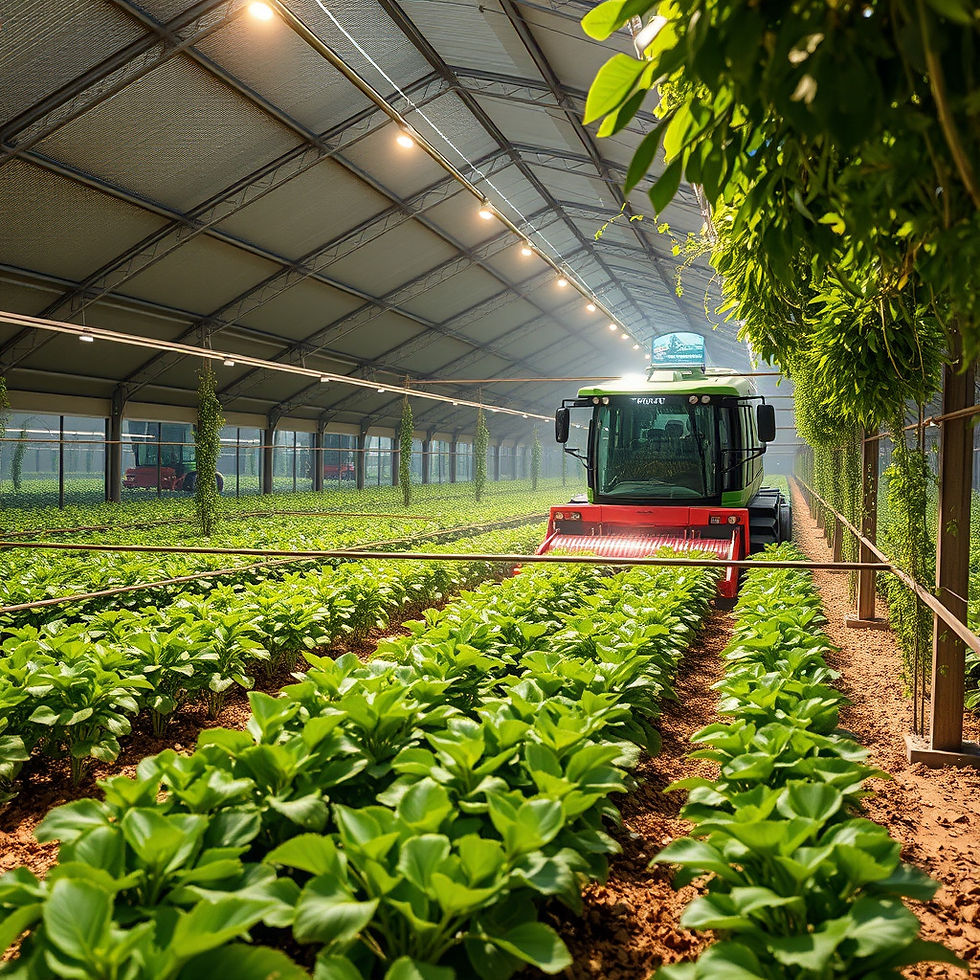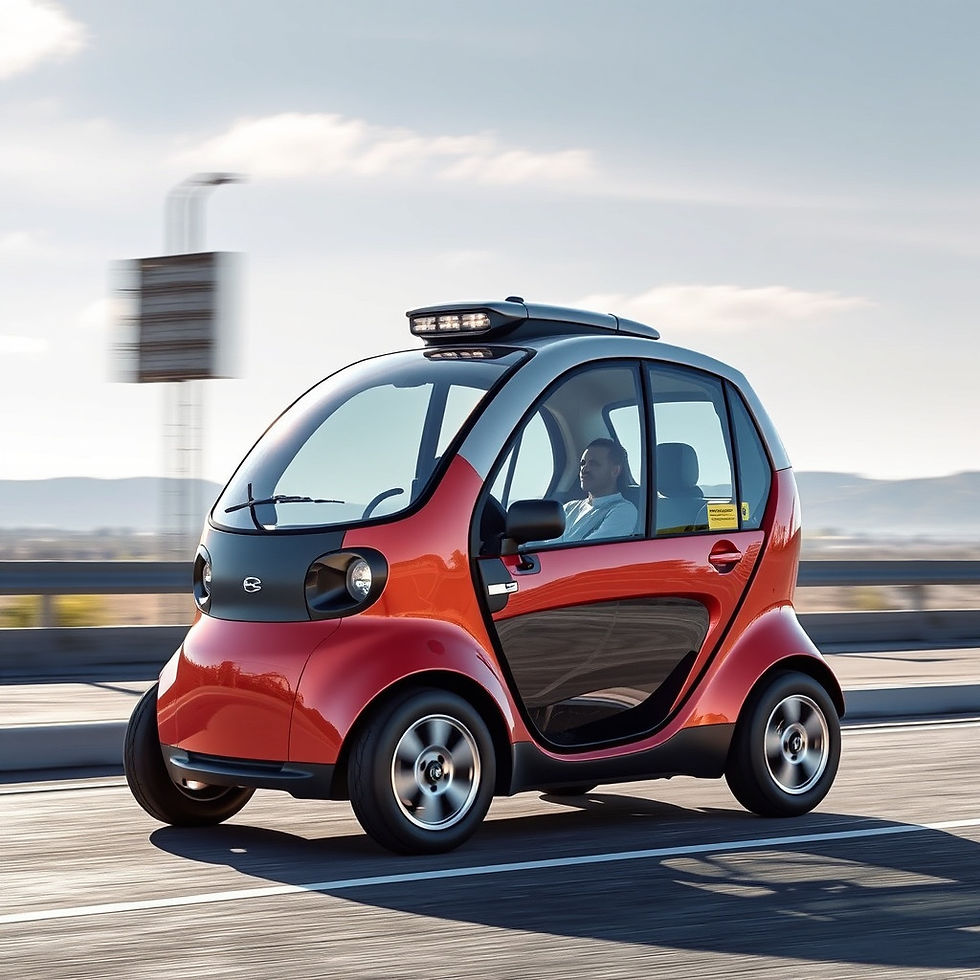Top 10 Real-World Applications of the Internet of Things (IoT)
- GJC Team

- Aug 4
- 4 min read

Why IoT is Changing Everything
The Internet of Things (IoT) has become one of the most important digital technologies shaping our world today. It refers to the growing network of physical devices connected to the internet, collecting and exchanging data. These devices range from smartwatches and fridges to factory machines and traffic sensors. IoT is helping businesses, cities, farms, and homes become smarter, faster, and more efficient.
In this article, we explore the top 10 real-world applications of IoT, showing how this technology is improving daily life, industry performance, and future planning. Whether you're a student, business owner, government leader, or just curious about tech, these examples show how IoT is already reshaping our world.
1. Smart Homes: Making Everyday Living Easier
Smart homes are one of the most popular uses of IoT. Using connected devices like smart lights, voice assistants, and smart thermostats, homeowners can control their home from anywhere using their phone. Forgot to turn off the oven? Just tap your app. Want to adjust the lighting or see who’s at the door? It’s all possible with smart home tech.
IoT also improves energy use, helping people save money and reduce carbon emissions. As homes become smarter, life gets more convenient, secure, and eco-friendly.

2. Smart Cities: Building the Cities of the Future
Smart cities use IoT to improve urban life by linking services like public transport, utilities, traffic control, waste collection, and more. Sensors monitor everything from road traffic and air pollution to water use and energy demand.
Cities like Singapore and Barcelona are already using smart streetlights, intelligent traffic systems, and connected emergency services. These technologies make cities cleaner, safer, and more liveable, helping governments manage growth and deliver better services.

3. Healthcare Monitoring: A Healthier Future with IoT
IoT in healthcare allows doctors and patients to monitor health in real-time. Wearables like smartwatches can track heart rate, sleep, and physical activity. Hospitals use IoT to monitor patients remotely, reduce wait times, and manage medical equipment more efficiently.
In countries like Taiwan, wearable tech is even used to track fetal health at home, providing real-time feedback to expecting mothers and doctors. IoT helps make healthcare more personal, efficient, and proactive.

4. Industrial IoT: Smarter Factories, Better Products
Manufacturers are using Industrial IoT (IIoT) to create smart factories. Machines are fitted with sensors that track performance, predict failures, and alert staff to issues before they become serious.
This leads to lower maintenance costs, less downtime, and improved safety. Businesses can track inventory in real time and improve production planning. This technology helps factories become more competitive and responsive to demand.
5. Agriculture and Farming: Smart Tools for Smarter Harvests
Smart agriculture is changing the way farmers work. IoT devices monitor soil moisture, crop growth, weather patterns, and even the health of animals. This means farmers can water, fertilise, and harvest at the right time, saving water and boosting yields.
This tech is especially helpful in areas with harsh climates or water shortages. With IoT, farmers can make decisions based on real-time data, improving food production and sustainability.

6. Retail Innovation: Personalised Shopping Experiences
Retailers use IoT to improve customer service and stock management. Smart shelves alert staff when stock is low. Sensors track how customers move around the store, helping businesses display products better.
IoT also helps with online shopping by offering personal recommendations based on past purchases and location. With smart checkout systems, customers can pay quickly and easily. IoT helps create a smooth, data-driven shopping experience.

7. Smart Grids and Energy Management: Greener Power Systems
IoT-enabled smart grids help manage electricity use more efficiently. Sensors track real-time power demand, helping energy providers respond quickly to changes and prevent blackouts. Smart meters allow users to see and manage their own energy use.
In homes, IoT devices can schedule appliances to run when electricity is cheaper. Across the whole system, this reduces waste, improves reliability, and supports renewable energy sources like wind and solar.
8. Transportation and Mobility: Safer, Smarter Travel
IoT is making roads safer and travel more efficient. Self-driving cars use sensors and cameras to detect road conditions and avoid accidents. Public transport systems track buses and trains in real-time to help commuters plan better.
Companies use IoT to manage vehicle fleets, track deliveries, and reduce fuel costs. With IoT, transport systems become more reliable, responsive, and environmentally friendly.

9. Supply Chain Management: Total Visibility and Control
Managing supply chains is complex, but IoT makes it easier. Sensors track goods as they move through factories, warehouses, and transport networks. Businesses can see exactly where products are and respond to delays or issues immediately.
IoT also supports digital twins—virtual models of supply chains that help test and improve systems before making real-world changes. This reduces waste, lowers costs, and improves service delivery.
10. Hospitality and Tourism: Connected, Customised Experiences
Hotels and resorts use IoT to offer better guest experiences. Mobile keys let guests access rooms using their phones. Smart devices allow them to adjust lighting, order room service, or give feedback instantly.
Behind the scenes, IoT helps manage energy use, track inventory, and monitor equipment. This means better service, lower costs, and happier guests. The travel industry is using IoT to create smarter, more personalised holidays.

Embracing the Connected Future
The Internet of Things is already transforming how we live, work, travel, and interact with the world. From smart homes and hospitals to connected factories and cities, IoT brings real benefits in efficiency, safety, and convenience.
As more devices become connected and technologies like AI and 5G evolve, the role of IoT will only grow. Governments, businesses, and individuals all stand to gain from investing in and understanding these powerful tools.
Key Recommendations:
Governments should support IoT development through infrastructure and regulation.
Businesses should explore IoT to improve operations and stay competitive.
Individuals can embrace smart devices to make everyday life easier.
Want more insights? Visit www.Georgejamesconsulting.com and subscribe to our latest articles on technology, digital transformation, and innovation.






Comments